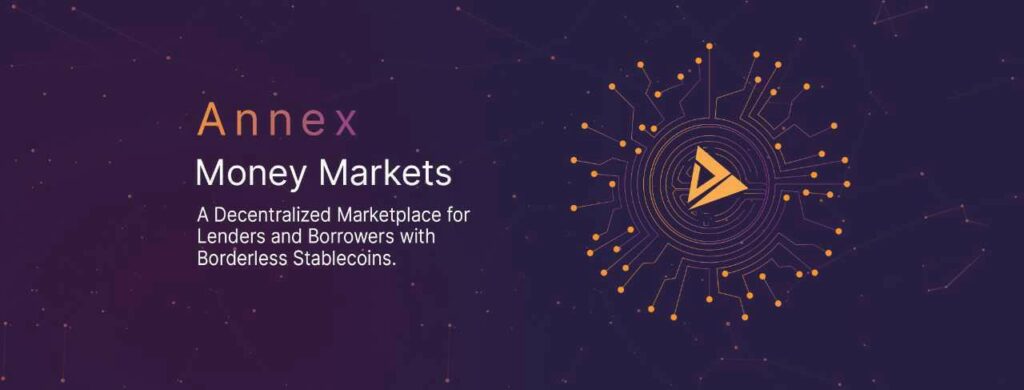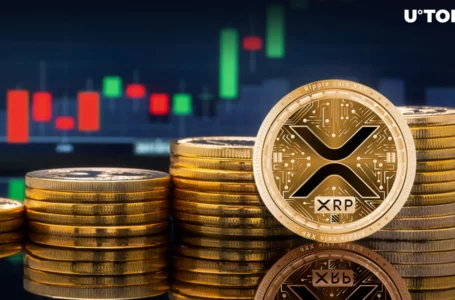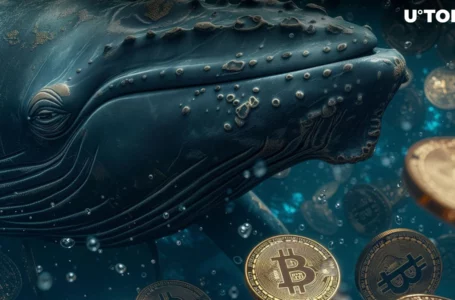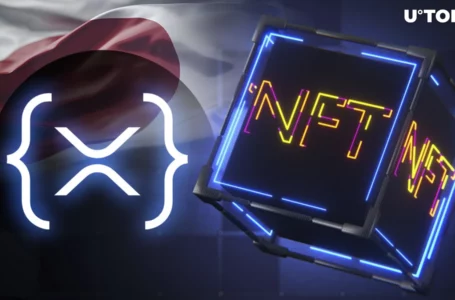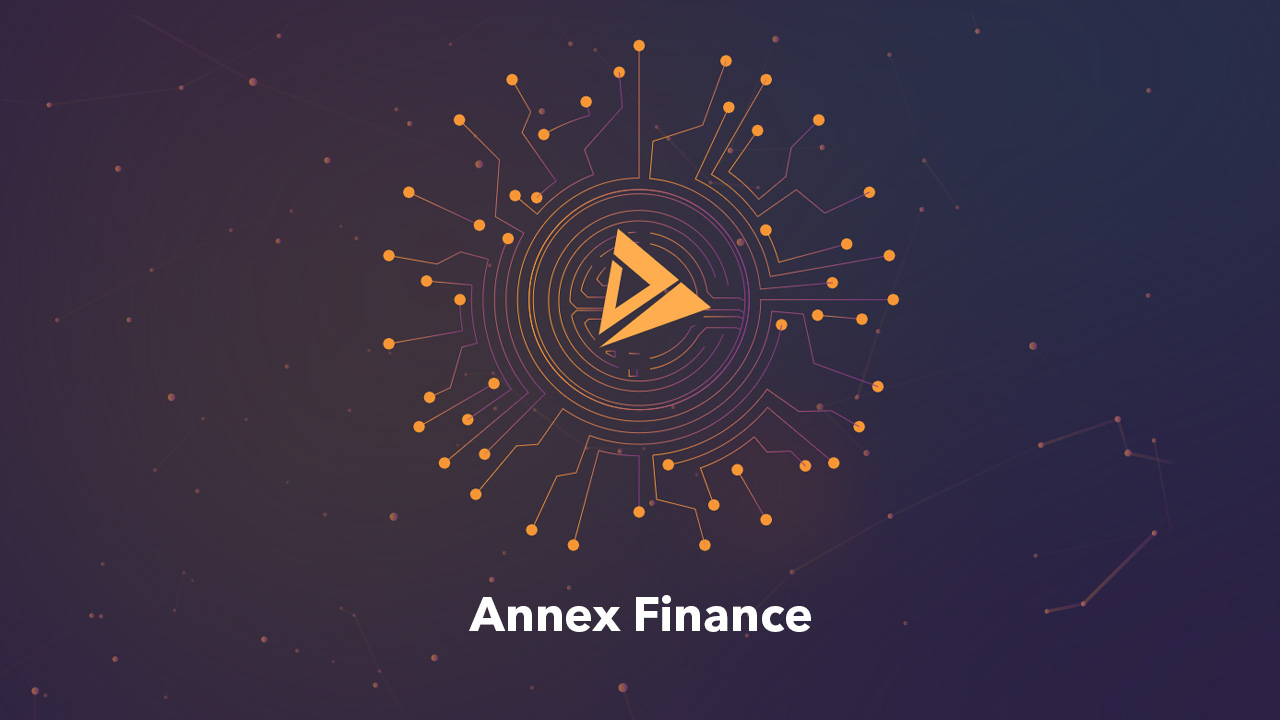
Annex Finance is a decentralized lending protocol that allows users to lend/enterprise using borderless stablecoins. The platform offers services such as lending, automated market making DEX, decentralized auction, and an NFT marketplace.
What is Annex Finance (ANN)?
Annex Finance is a cryptocurrency lending platform. The aim of the project is to unite the traditional lending platform to the BSC, ETH and Poly network, bringing the networks closer together, starting at the BSC. The project will include DEX swap, allowing users to create LP and liquidity with high APY returns, increasing ANN price/volume, allowing users to borrow and provide assets via smart contracts. The protocol will also offer NFT market as well as IDO auction, Annex Finance aims to be a one-stop multi-chain DeFi platform.
Annex Finance is not worried about competition with other lending projects, such as Venus, for example, but wants to coexist with them. Annex Finance’s objective is to unite the BSC networks, Ethereum and Polygon, offering a lending platform that can support them all. With Annex Finance, users can borrow and borrow money via smart contracts, similar to traditional DeFi lending protocols.
How does Annex Finance (ANN) work?
Annex Finance wants to create a decentralized marketplace for lenders and borrowers with borderless stablecoins. By being on the Binance Smart Chain (BSC), Annex Finance is promoting near-instant and secure transactions at a significantly lower fee. Users can leverage Borrow On-Demand’s features to gain access to instant liquidity. They can use the AToken guarantee to borrow from the Attachment Protocol instantly, with no trading fees, no slippage, directly on-chain and available globally.
Users can borrow cryptocurrencies and stablecoins with secured loans through BSC’s vast network, or provide them and earn high APY for providing liquidity to the protocol, especially as it is the first source of platform token liquidity ($ANN). Annex Finance will have a time lock system to manage the value of funds where users can choose a lock time. The longer the assets are locked, the higher the $ANN APY payout. Users’ liquidity will be managed by smart contracts, and only interested parties will have access to their own money.
Annex Finance honors DeFi’s transparency and fairness by presenting clearly defined formulas and diagrams in its whitepaper so users can easily understand and track how the lucrative auto-rewards system works.
Annex Swap and AMM
The liquidity mining model will be implemented to provide unique income agriculture for aTokens. At the essence of DEX (decentralized exchange), DEX needs liquidity from its user, community and participants. Therefore, when using DEX, the liquidity provided by users will have the opportunity to increase their capital. Users who provide aTokens in liquidity will also receive a high APY per loan.
NFT Market
The NFT Attachment marketplace will offer a wide range of non-fungible tokens, including art, censorship-resistant domain names, virtual worlds, trading cards, sports, and collectibles. Includes ERC721 and ERC1155 goods. Users can buy, sell, and discover unique digital assets like Binance NFT, ENS names, Fungible, and more. ANN is the main NFT currency in the NFT annex market for creators and buyers to buy items. Creators can set fixed prices with ANN units and buyers can bid or bid with ANN.
Creators can create their own items on the blockchain using the NFT Attachment Item Minting Tool. Users can use it to make a collection and NFTs for free, without the need for a single line of code. Whether users are developing their own smart contract for a game, digital collectible, or some other project with unique digital items on the locks, users can easily be added to the NFT Attachment market.
System architecture
The platform DEX will use a sushiswap codebase fork to create tokens. When users use the platform, they are using an underlying asset to first join Tokens. These assets held as collateral will have dollar values that are linked to the Tokens natives. Due to the nature of cryptocurrency. Collateral values are pulled from market rates in real time through the use of the Chainlink protocol to market price update to ensure fair market value.
Annex Auction
Attachment Auction is a set of open source smart contracts created to ease the process of launching a new project on AttachSwap exchange. Annex The auction aims to boost new capital and trade for the exchange, increasing the attractiveness of AnnexSwap as a place for token creators and communities to launch new project tokens.
Auction benefit
The main benefit of the Attachment Auction is that it provides Initial Liquidity Suppliers of new listings at low prices and keeps the auction token price higher than the sale price. The Annex supports various auction types based on auctioneer requirements to encourage more listings of new chips. ANN will be an auction payment currency, for example, 10.000 ANN needed to create a new auction, therefore, will encourage ANN tokens in circulation and use.
Auction Types
- dutch auction
- Fixed exchange auction
- Sealed Bids Auction
- Auction by lots (Recommended for the ILO)
- English auction
Annex will primarily recommend Batch Auction to increase the initial liquidity of new listings throughout the Auction Annex.
Advantage of the Auction by Lot
The biggest advantage is certainly that buyers don’t have to wait for a certain time to place orders, but they can place orders at any time. This makes the system much more convenient for users. Dutch auctions have very high activity even before the auction closes. If parts of the infrastructure are not working reliably during this period of time, then prices may drop more than expected, causing a loss for the auctioneer.
Also, high gas prices during this short period of time can be a deterrent for buyers to quickly join the auction. Dutch auctions calculate their price based on block time. This price is difficult to predict for all participants, since mining is a stochastic process. In addition, the unpredictability for the mining time of the next block.
Dutch auctions are sparking a gas bidding war to end the auction. In contrast, in a batch auction, different buyers will bid against other bidders in the mem pool. Especially, once EIP-1559 is implemented and mining of one transaction is guaranteed for the next block, then bidders have to compete on bid cap prices instead of gas prices to be included in the auction.
supply of goods
Annex Finance users can provide various supported cryptocurrencies or digital assets on the platform, which can be used as collateral for loans, provide liquidity and earn an APY. Providing assets such as cryptocurrencies or digital Assets from Attachment Finance gives users the ability to participate as a lender while maintaining the security of collateral in the protocol. Users will earn a variable based interest rate, depending on the use of the specific market yield curve.
All users’ assets are bundled into smart contracts so that users can withdraw their supply at any time, given that the protocol balance is positive. Users who provide their cryptocurrency or digital asset to Attachment Finance will receive an aToken, like aBTC and aBNB, which is the only token that can be used to redeem the underlying collateral provided. This will allow users to use these tokens to protect against other assets or move them to cold storage wallets that support Binance Smart Chain.
borrowed assets
Users wishing to borrow any of the cryptocurrencies supported by the Financial Annex platform will be required to undertake to assume commitments or guarantees that are locked into the protocol. Locked assets will allow users to borrow up to 60% of the collateral value.
Once a user provides its collateral, the user will be able to borrow a range of collateral from the asset, depending on the asset. For example, if a user has provided $1000 of BNB, the user will be able to borrow up to 60% of their asset value from the lending platform. However, if a user’s collateral value falls below its collateral percentage ratio of its asset, a liquidation event will occur.
Users need to be aware of the value of their assets to avoid liquidation in case their locked collateral asset has taken a dip while borrowing. Users of the Annex Finance platform will have a compound interest rate that will be applied per block on the loaned asset, with no monthly payment obligations. In order to return the asset, the borrower must pay its original obligations plus the total compounded interest back to the platform.
ANN token
The ANN cryptocurrency has the maximum supply of 1.000.000.000 ANN tokens. The Annex Finance platform will employ the ANN token as a governance mechanism. ANN will provide liquidity and guarantees at the same time. ANN will also have additional use cases such as the ability to buy and sell NFTs and auction money. In addition to utility, the ANN token has automatic retention benefits. If users hold ANN tokens for more than 30 days, they will get a 73% APY return with 0,2% daily on their ANN holdings every day after the 31st day.
aToken (ANN) will control the Finance Attachment. ANN may be minted up to a maximum of 700.000.000 tokens during the development of the lending platform and to provide liquidity to the DEX Swap. Lenders and Borrowers will be paid with ANN tokens for adopting the Lending Protocol, while liquidity providers will be rewarded for providing liquidity to Swap DEX. The ANN token distribution incentive will be valid for six years.
Annex Finance will also lock 50.000.000 ANN in a token contract on Ethereum and Binance Smart Chain to reward holders of ANN tokens in personal wallets that have been in their wallets for more than 30 days, depending on the seasons. The token will be auctioned via Attachment Auction and DEX exchange, with additional initial distribution supply allocated for project development.
Early investors using the locked system at this early stage will be highly rewarded with aTokens through the bonus system. Annex Finance token holders can also use the token to vote within the governance mechanism. To acquire and bid on NFT collectibles, the Annex NFT market will employ ANN/BNB as NFT money. ANN will also be used to form an auction pool and pay the auction costs.
Annex Finance Price Forecast (ANN)
The price of Annex Finance is forecast to reach a maximum level of $0.1025 throughout 2022. As early as 2023 according to our crypto price prediction index, Annex Finance (ANN) may reach a maximum level of $0.1973, with the price trading average of $0.1467. In 2025 according to our crypto price prediction index, ANN is expected to cross an average price level of $0.2378.
The expected minimum value of the Annex Finance price at the end of the current year should be $0.2196. Additionally, ANN can reach a maximum price level of $0.2424. The Annex Finance price is forecast to reach the lowest possible level of $0.2105 in 2030. According to our crypto price prediction index, the ANN price could reach a maximum possible level of $0.3882, with the predicted average price of $0.2925.
Bottom Line
Annex Finance hopes to revolutionize DeFi with its native multi-utility token ANN. The platform was initially built on Binance Smart Chain, but has plans on its roadmap to expand to other blockchains. The addition of Annex Cronos Mainnet was relatively successful and placed the platform among Cronos’ top earners in terms of TVL.
